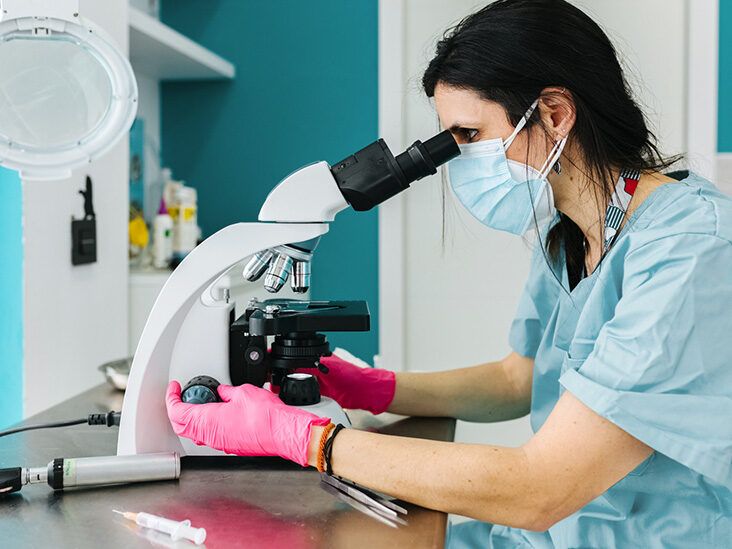 Researchers have developed a blood thinner that can be reversed with fast-acting antidote. Halfpoint/Getty Images
Researchers have developed a blood thinner that can be reversed with fast-acting antidote. Halfpoint/Getty Images- Researchers developed an experimental blood thinner, or anticoagulant, that prevents blood clots from forming, but whose action can be rapidly turned reversed.
- The drug includes two molecules that bind to and block the activity of thrombin, a protein involved in the formation of blood clots.
- An “antidote” would break the weak bonds between the two molecules and turn off the drug’s ability to block thrombin’s activity.
Blood thinners, or anticoagulants, can reduce the risk of developing life-threatening blood clots after surgery, stroke or heart attack, or in people with venous thrombosis or atrial fibrillation.
But these drugs can have serious side effects such as severe bleeding after trauma or injury. In addition, an estimated 15% of emergency department visits in 2017 for drug-related side effects were due to oral blood thinners.
To reduce the chances of dangerous bleeding in people undergoing this type of therapy, researchers developed a new blood thinner or anticoagulant that prevents the formation of blood clots, but whose activity can be reversed with a fast-acting “antidote.”
Additional research, including clinical trials, is needed before this anticoagulant can be approved for use in the clinic.
But Jason Tarpley, MD, PhD, a stroke neurologist and director of the Stroke and Neurovascular Center for Pacific Neuroscience Institute in Santa Monica, Calif., called the experimental anticoagulant “promising,” especially since it works through a new mechanism.
Tarpley was not involved in the research.
However, he emphasized that as with all anticoagulants, there is a risk of bleeding.
“This medication would still have some risks — for example, there would be a risk of bleeding — but the benefit of this drug is that if a patient has problems with bleeding, you can reverse the drug’s action,” he told Healthline.
Tarpley was not involved in the new research, which was published Apr. 30 in Nature Biotechnology.
How researchers created a reversible blood thinner
The reversible anticoagulant developed by the researchers includes two molecules that bind to specific sites on thrombin, a key protein involved in the formation of blood clots. These two molecules are part of what researchers refer to as the “supramolecular” approach.
After binding, the molecules interact with each other to inhibit thrombin’s activity. When combined, these molecules block the activity of thrombin 800 times more than if either molecule were bound to the protein by itself, the researchers wrote.
When the antidote for this anticoagulant is applied, the two molecules dissociate from each other, which neutralizes their ability to block the activity of thrombin. This allows blood clots to form again.
The action of the drug is possible because when the molecules are bound to thrombin, they are joined to each other by two strands of peptide nucleic acid (PNA). These are similar in structure to DNA and RNA, but are artificially created.
The bonds formed by the PNA strands are relatively weak, so they are easily broken by the antidote, which causes deactivation of the drug.
Although this approach to reversing a blood thinner is unique, “there are some other drugs on the market that work through the same general concept,” said Tarpley. However, “those drugs have some limitations, most of which is their high cost.”
Doctors can also reverse the effects of anticoagulants by giving a patient non-specific clotting factors in large amounts. This approach, though, doesn’t deactivate the anticoagulant itself.
It also “broadly increases someone’s likelihood of clotting,” said Tarpley, “so this kind of on-off switch [of the new drug] is encouraging.”
New type of drug could help with immunotherapy treatment
Nicolas Winssinger, PhD, one of the researchers who developed the new anticoagulant, and a professor in the department of organic chemistry at the University of Geneva (UNIGE) Faculty of Science, said their approach could also be used for other types of treatments.
“The supramolecular approach proposed is remarkably flexible and can be easily adapted to other therapeutic targets. It is particularly promising in the field of immunotherapy,’’ he said in a release.
Immunotherapy is a type of therapy that stimulates or suppresses the activity of the immune system. However, with certain types of immunotherapy, the immune system is suppressed so much that it increases the risk of infection.
If an immunotherapy drug were designed in the same way as the new anticoagulant, the drug could be deactivated by breaking the bonds of the PNA strands that bind the two parts of the drug. This would enable a doctor to reactivate a person’s immune response in a critical situation such as if they had an infection.
Takeaway
Researchers developed an experimental anticoagulant, or blood thinner, that blocks the activity of thrombin, a protein involved in the formation of blood clots. The drug’s action can be rapidly reversed with an “antidote.”
The drug contains two molecules that bind to thrombin. After binding, these molecules are linked to each other through weak bonds that can be broken by the antidote.
The drug would still carry a risk of bleeding, but the drug’s action could be easily reversed. Researchers say the strategy could be applied to other types of treatments, such as immunotherapy.

 2 weeks ago
14
2 weeks ago
14








 English (US)
English (US)